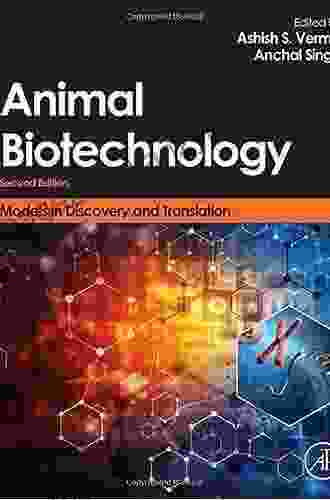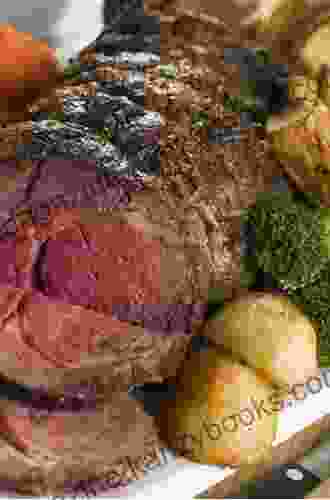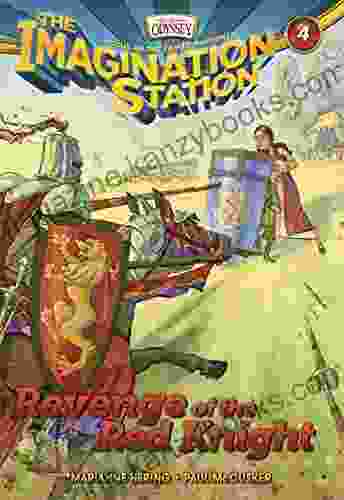Animal Biotechnology Models In Discovery And Translation: A Comprehensive Guide

5 out of 5
| Language | : | English |
| File size | : | 15311 KB |
| Text-to-Speech | : | Enabled |
| Screen Reader | : | Supported |
| Enhanced typesetting | : | Enabled |
| Print length | : | 668 pages |
Animal biotechnology models are essential tools in biomedical research, providing valuable insights into human biology and disease. They have played a pivotal role in the development of countless therapies and treatments, and continue to hold immense promise for future medical advances.
Types of Animal Biotechnology Models
There are a wide range of animal biotechnology models available, each with its own unique advantages and disadvantages. The most commonly used models include:
- Mice: Mice are the most widely used animal model in biomedical research due to their small size, short lifespan, and ease of genetic manipulation. They have been used to study a wide range of diseases, including cancer, heart disease, and neurodegenerative disFree Downloads.
- Rats: Rats are larger than mice, but they are still relatively easy to handle and breed. They are often used to study more complex diseases, such as obesity and diabetes.
- Rabbits: Rabbits are larger than rats, but they are still relatively easy to handle and breed. They are often used to study cardiovascular diseases and reproductive disFree Downloads.
- Dogs: Dogs are larger than rabbits, but they are still relatively easy to handle and breed. They are often used to study canine-specific diseases, such as hip dysplasia and cancer.
- Non-human primates: Non-human primates are the most closely related to humans, and they are therefore the most expensive and difficult to use as animal models. However, they are also the most accurate models for studying human diseases.
Applications of Animal Biotechnology Models
Animal biotechnology models are used in a wide range of applications, including:
- Drug discovery: Animal models are used to test the safety and efficacy of new drugs before they are tested in humans. They can also be used to identify new targets for drug development.
- Regenerative medicine: Animal models are used to develop new therapies for regenerating damaged tissues and organs. They can also be used to test the safety and efficacy of new stem cell therapies.
- Personalized medicine: Animal models are used to develop new personalized medicine approaches, which tailor treatments to the individual patient. They can be used to identify genetic markers that are associated with disease risk, and to develop new therapies that target these markers.
Challenges in Animal Biotechnology Modeling
There are a number of challenges associated with the use of animal biotechnology models, including:
- Species differences: Animal models are not perfect replicas of humans, and there can be significant differences between species in terms of anatomy, physiology, and metabolism. This can make it difficult to extrapolate results from animal studies to humans.
- Cost: Animal biotechnology models can be expensive to develop and maintain. This can limit their availability to researchers, especially in developing countries.
- Ethical concerns: There are ethical concerns about the use of animals in research. Some people argue that it is wrong to subject animals to pain and suffering, even for the potential benefit of humans.
The Future of Animal Biotechnology Modeling
Despite the challenges, animal biotechnology models remain essential tools in biomedical research. The field is constantly evolving, and new technologies are being developed to address the limitations of current models. These technologies include:
- Gene editing: Gene editing techniques, such as CRISPR-Cas9, allow researchers to make precise changes to the DNA of animal models. This can be used to create models of specific diseases, or to test the effects of specific genes on disease development.
- Stem cells: Stem cells have the potential to regenerate damaged tissues and organs. They can be used to create animal models of regenerative medicine therapies, and to test the safety and efficacy of new stem cell therapies.
- Computational modeling: Computational modeling can be used to simulate animal models and to predict the results of experiments. This can help to reduce the need for animal testing, and to make research more efficient.
The future of animal biotechnology modeling is bright. New technologies are being developed to address the limitations of current models, and to make animal research more efficient and humane. These technologies will help to ensure that animal biotechnology models continue to play a vital role in biomedical research for years to come.
Animal biotechnology models are essential tools in biomedical research, providing valuable insights into human biology and disease. They have played a pivotal role in the development of countless therapies and treatments, and continue to hold immense promise for future medical advances. The field of animal biotechnology modeling is constantly evolving, and new technologies are being developed to address the limitations of current models. These technologies will help to ensure that animal biotechnology models continue to play a vital role in biomedical research for years to come.
References
- Animal Biotechnology Models in Biomedical Research, National Institutes of Health
- The Use of Animal Models in Biomedical Research, The Humane Society of the United States
- The Future of Animal Research, The Foundation for Biomedical Research
5 out of 5
| Language | : | English |
| File size | : | 15311 KB |
| Text-to-Speech | : | Enabled |
| Screen Reader | : | Supported |
| Enhanced typesetting | : | Enabled |
| Print length | : | 668 pages |
Do you want to contribute by writing guest posts on this blog?
Please contact us and send us a resume of previous articles that you have written.
 Book
Book Novel
Novel Page
Page Chapter
Chapter Text
Text Story
Story Genre
Genre Reader
Reader Library
Library Paperback
Paperback E-book
E-book Magazine
Magazine Newspaper
Newspaper Paragraph
Paragraph Sentence
Sentence Bookmark
Bookmark Shelf
Shelf Glossary
Glossary Bibliography
Bibliography Foreword
Foreword Preface
Preface Synopsis
Synopsis Annotation
Annotation Footnote
Footnote Manuscript
Manuscript Scroll
Scroll Codex
Codex Tome
Tome Bestseller
Bestseller Classics
Classics Library card
Library card Narrative
Narrative Biography
Biography Autobiography
Autobiography Memoir
Memoir Reference
Reference Encyclopedia
Encyclopedia Teri Pichot
Teri Pichot Kim Stokely
Kim Stokely Recipes365 Cookbooks
Recipes365 Cookbooks Kimberly Mcbee
Kimberly Mcbee Ken Mcalpine
Ken Mcalpine Sean Chercover
Sean Chercover Kimberly A Kenney
Kimberly A Kenney Kimberly Meredith
Kimberly Meredith Keith Repult
Keith Repult Susan Burke
Susan Burke Margaret Brown
Margaret Brown Sara Collings Hansen
Sara Collings Hansen Stella Allen
Stella Allen Samuel Erskine
Samuel Erskine Kristen Balouch
Kristen Balouch Marcus Porges
Marcus Porges Pamela K Ritter
Pamela K Ritter Wendy Millstine
Wendy Millstine Ken Klein
Ken Klein Oliver Gart
Oliver Gart
Light bulbAdvertise smarter! Our strategic ad space ensures maximum exposure. Reserve your spot today!

 Christian CarterDiscover the Transformative Power of Sun Salutations: Your Ultimate Guide to...
Christian CarterDiscover the Transformative Power of Sun Salutations: Your Ultimate Guide to... Manuel ButlerFollow ·8.8k
Manuel ButlerFollow ·8.8k Mason PowellFollow ·5.8k
Mason PowellFollow ·5.8k Guy PowellFollow ·16.4k
Guy PowellFollow ·16.4k Devon MitchellFollow ·18.9k
Devon MitchellFollow ·18.9k John Dos PassosFollow ·17.1k
John Dos PassosFollow ·17.1k Gene SimmonsFollow ·16.5k
Gene SimmonsFollow ·16.5k Elmer PowellFollow ·13.4k
Elmer PowellFollow ·13.4k H.G. WellsFollow ·19.1k
H.G. WellsFollow ·19.1k

 Ernesto Sabato
Ernesto SabatoLoving Table: Creating Memorable Gatherings
Gatherings...

 Mark Twain
Mark TwainLifestyle After Cancer: The Facts
Cancer is a life-changing...

 Keith Cox
Keith CoxUnlocking the Nutritional Needs of Individuals with...
Individuals with physical disabilities...

 Rubén Darío
Rubén DaríoHandbook And Guide To Evaluation And Treatment
Empowering Healthcare...

 Andy Hayes
Andy HayesUnveiling the Truth: "Garden Myths" by Robert Pavlis...
The world of gardening is often filled with a...
5 out of 5
| Language | : | English |
| File size | : | 15311 KB |
| Text-to-Speech | : | Enabled |
| Screen Reader | : | Supported |
| Enhanced typesetting | : | Enabled |
| Print length | : | 668 pages |












